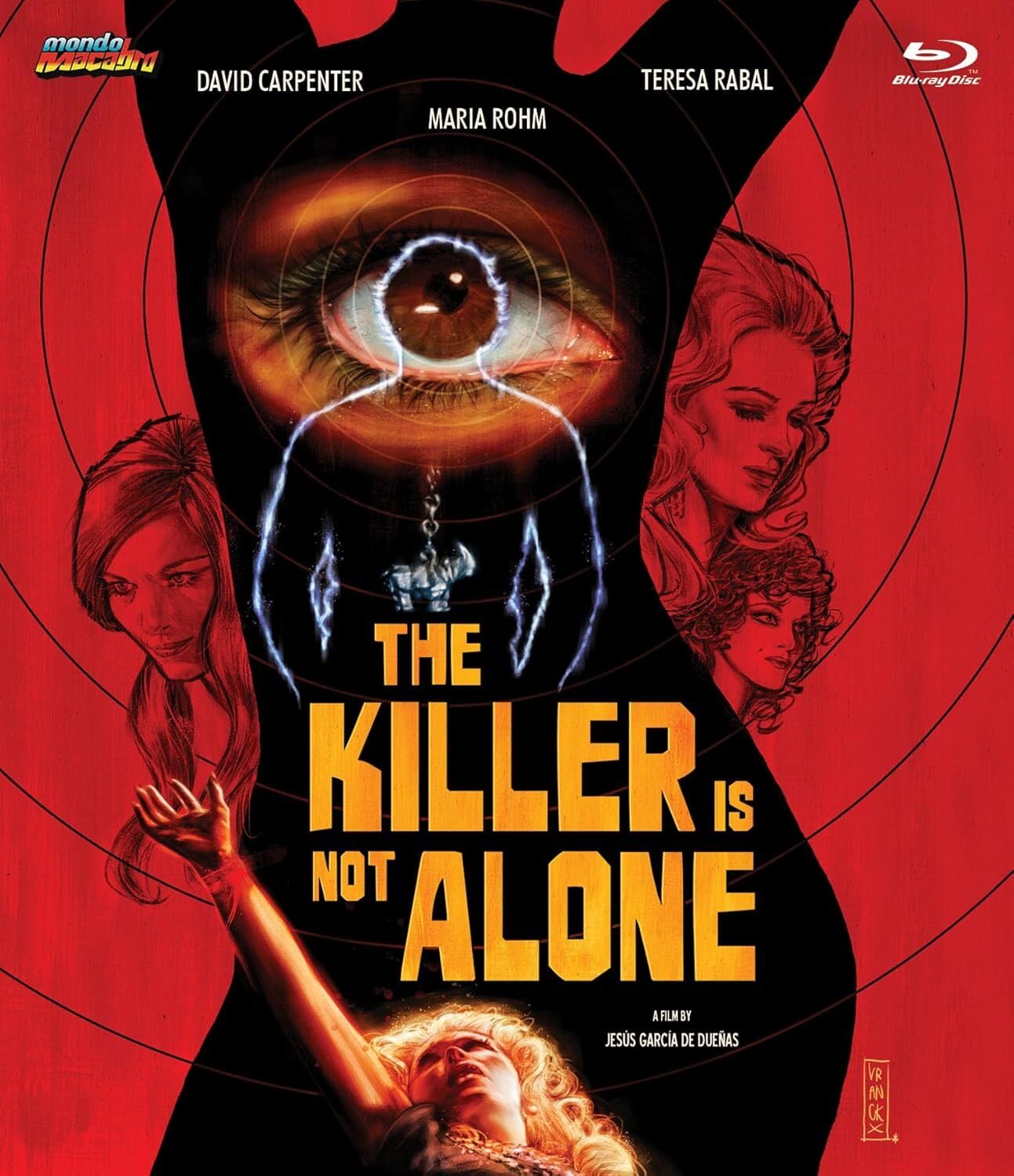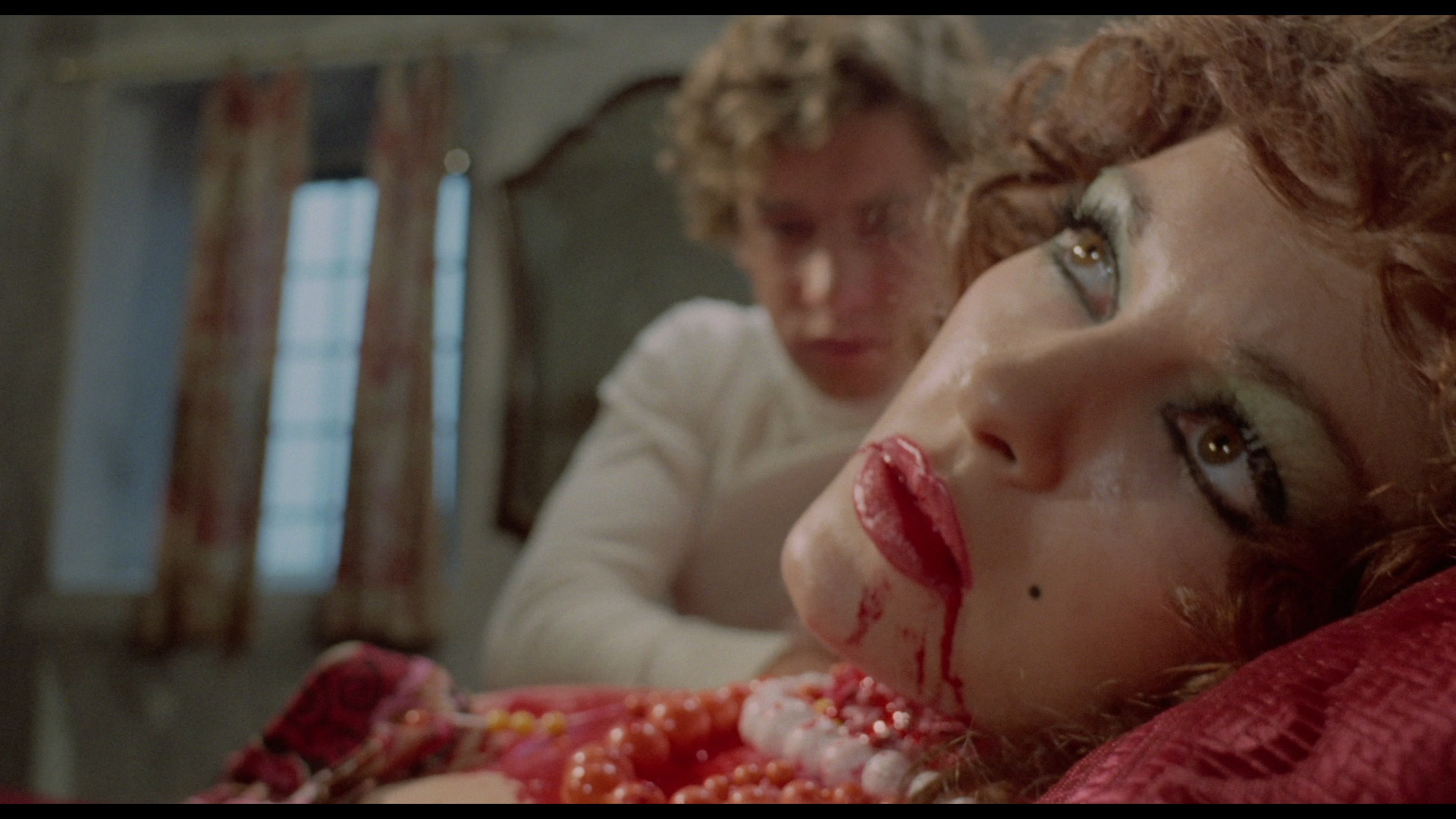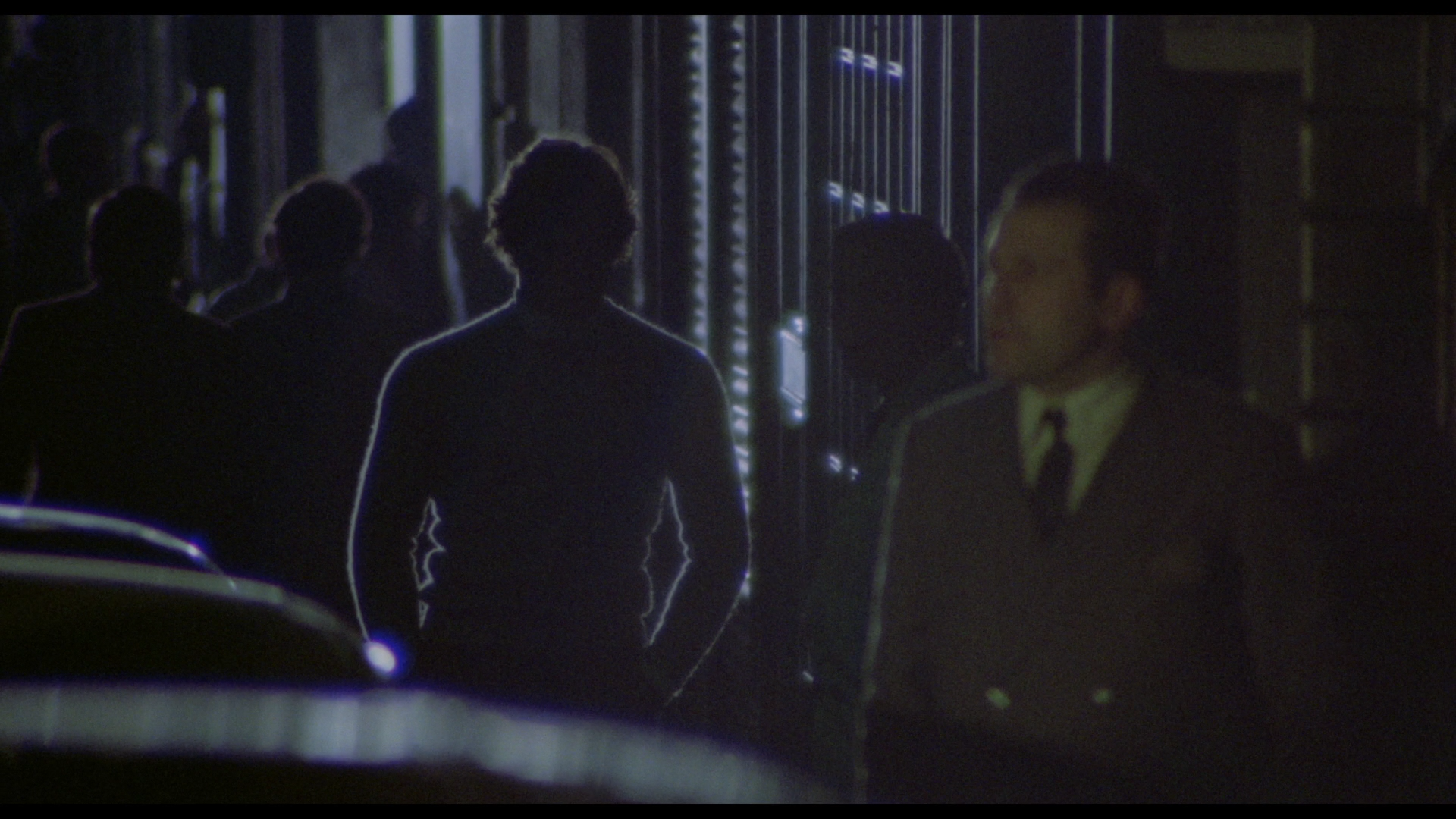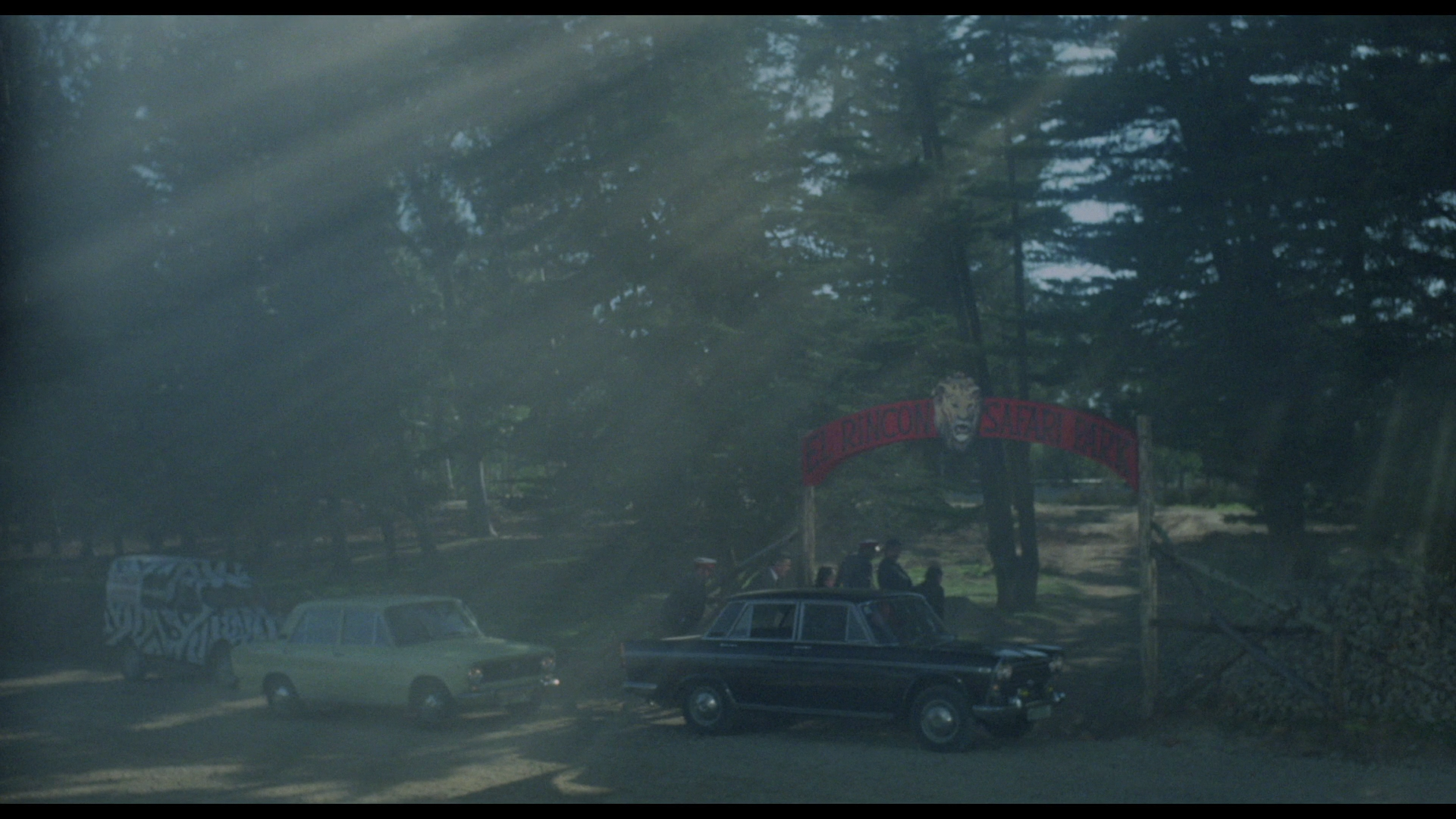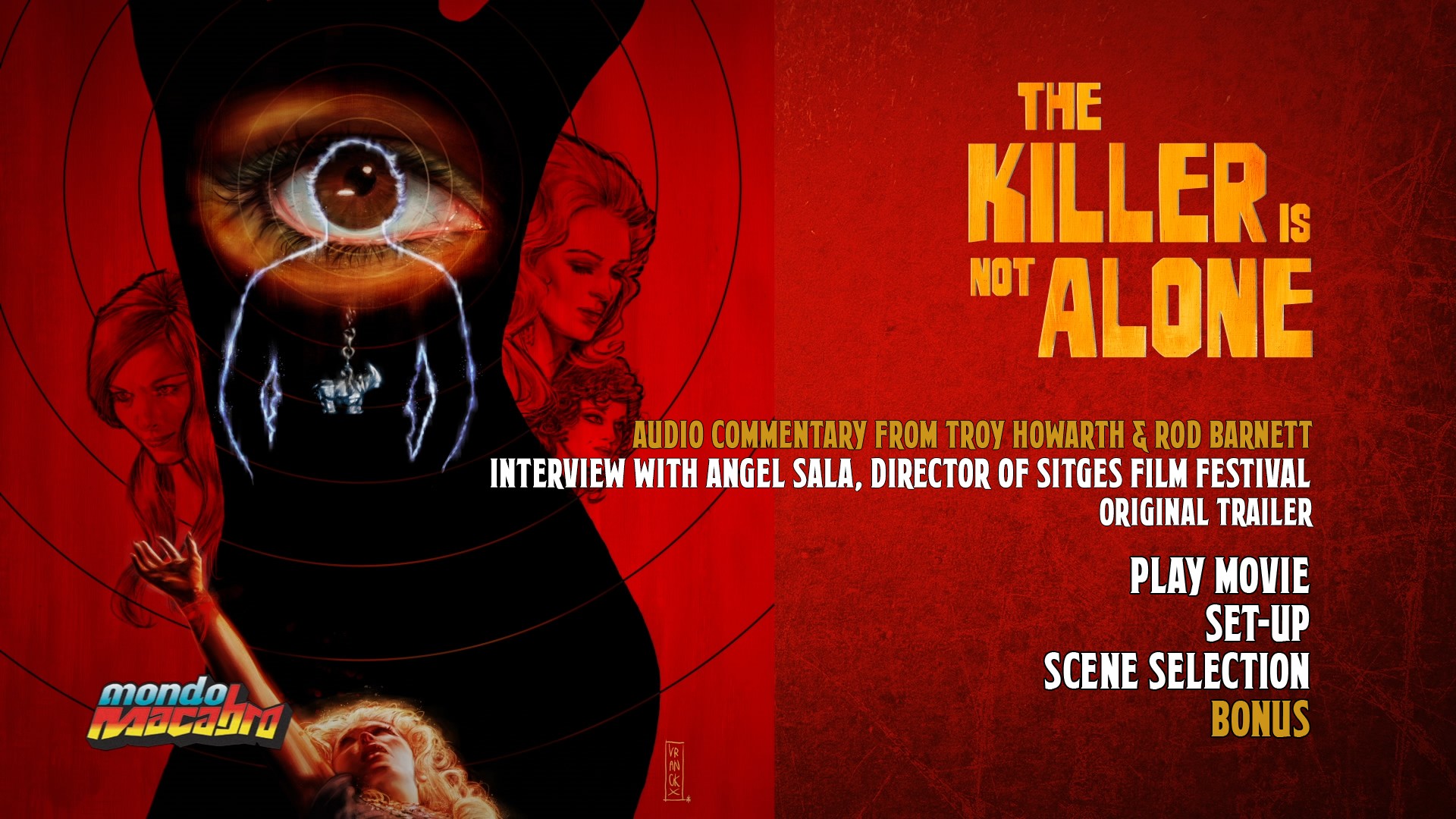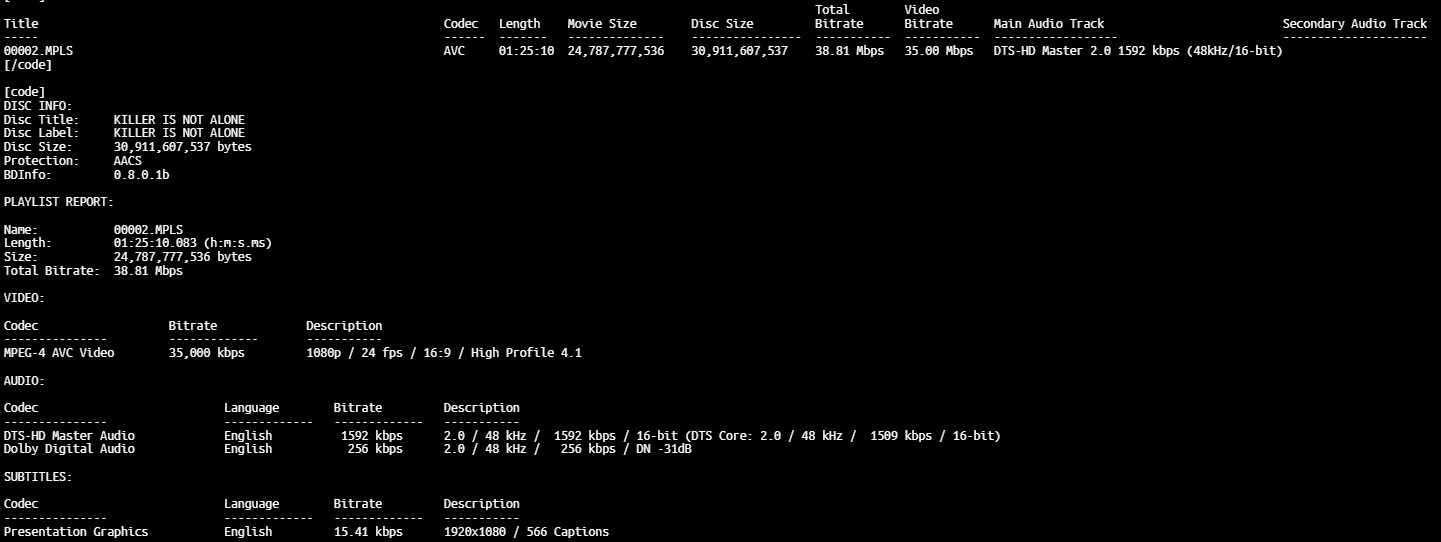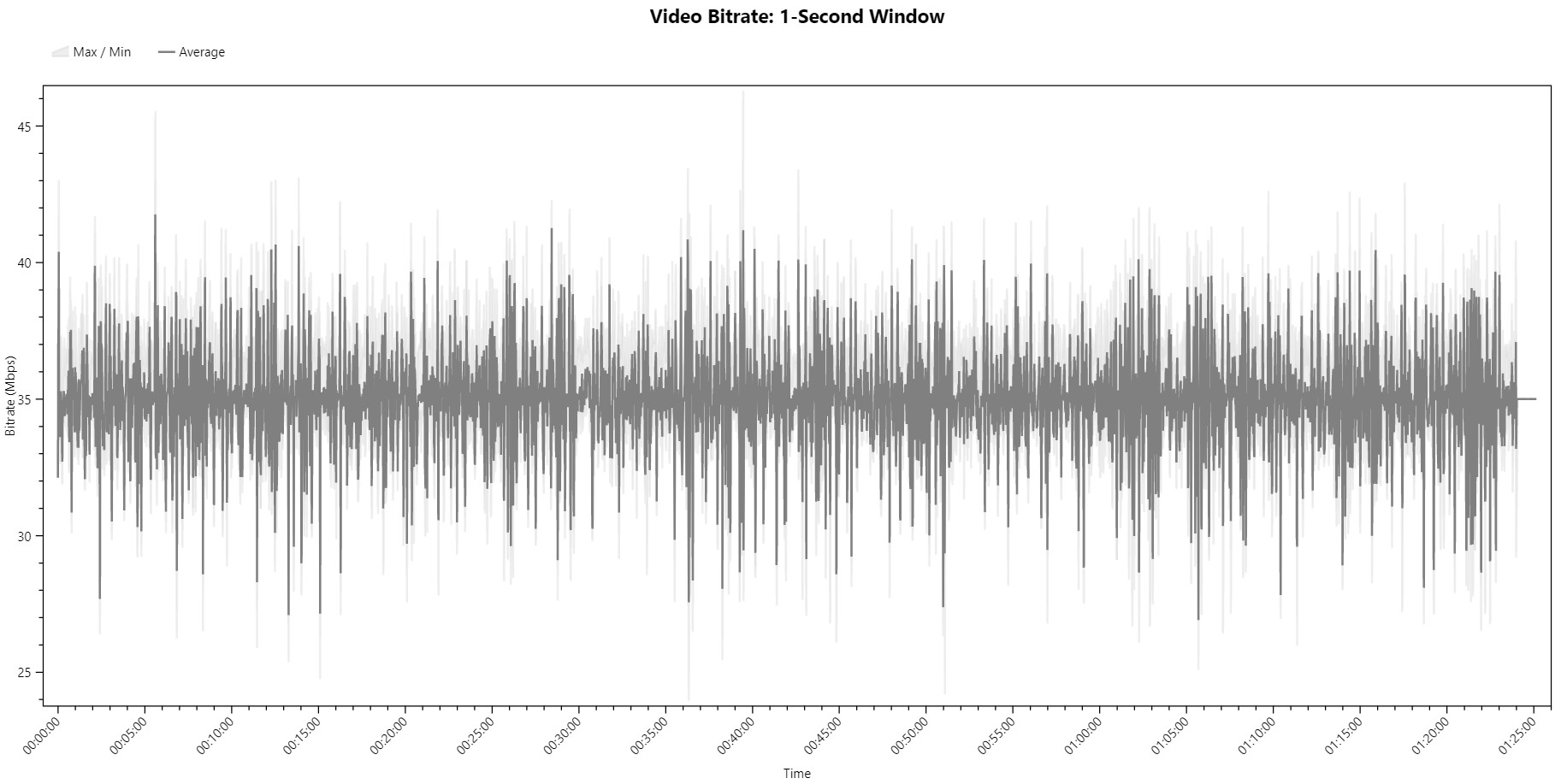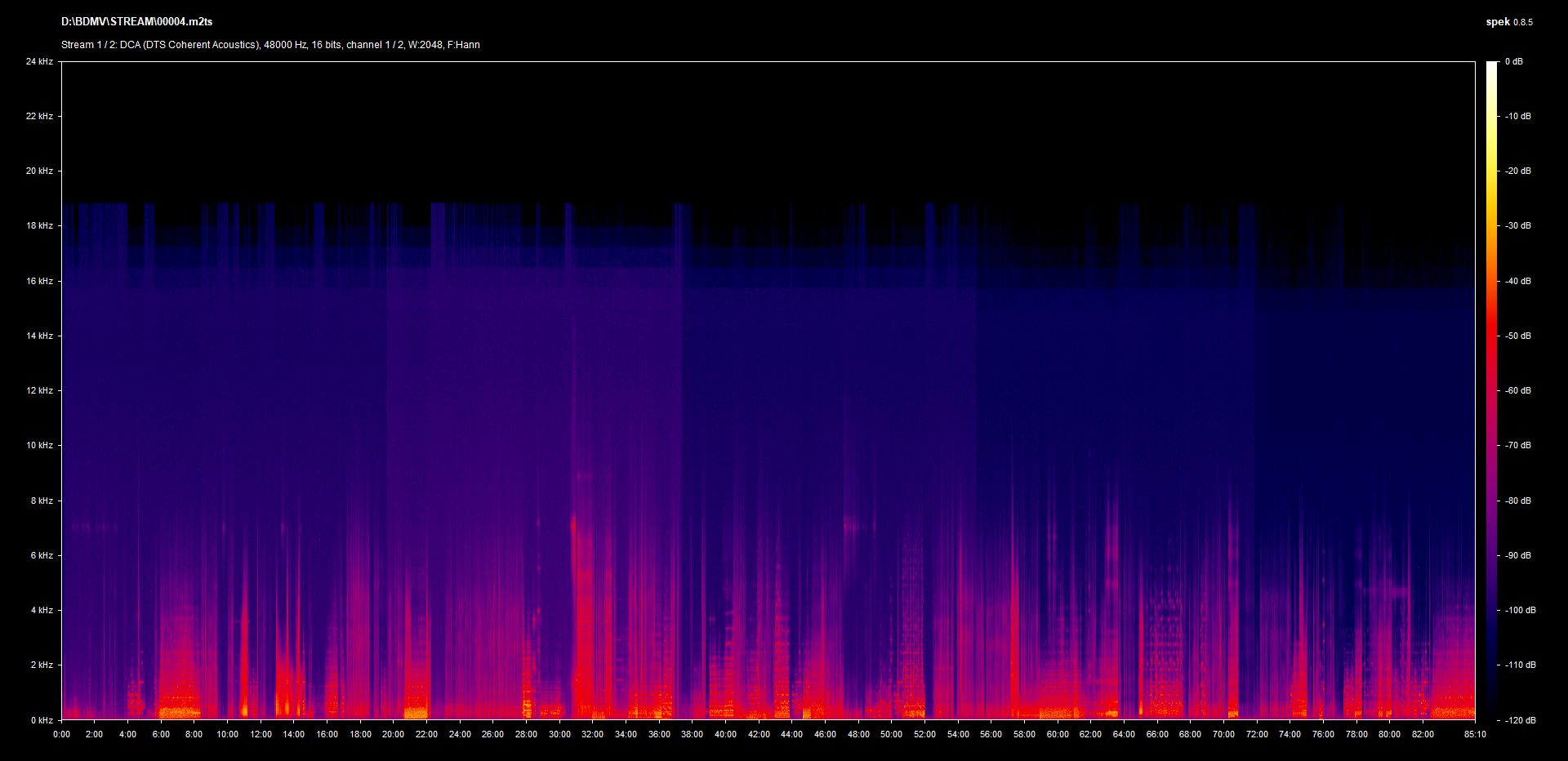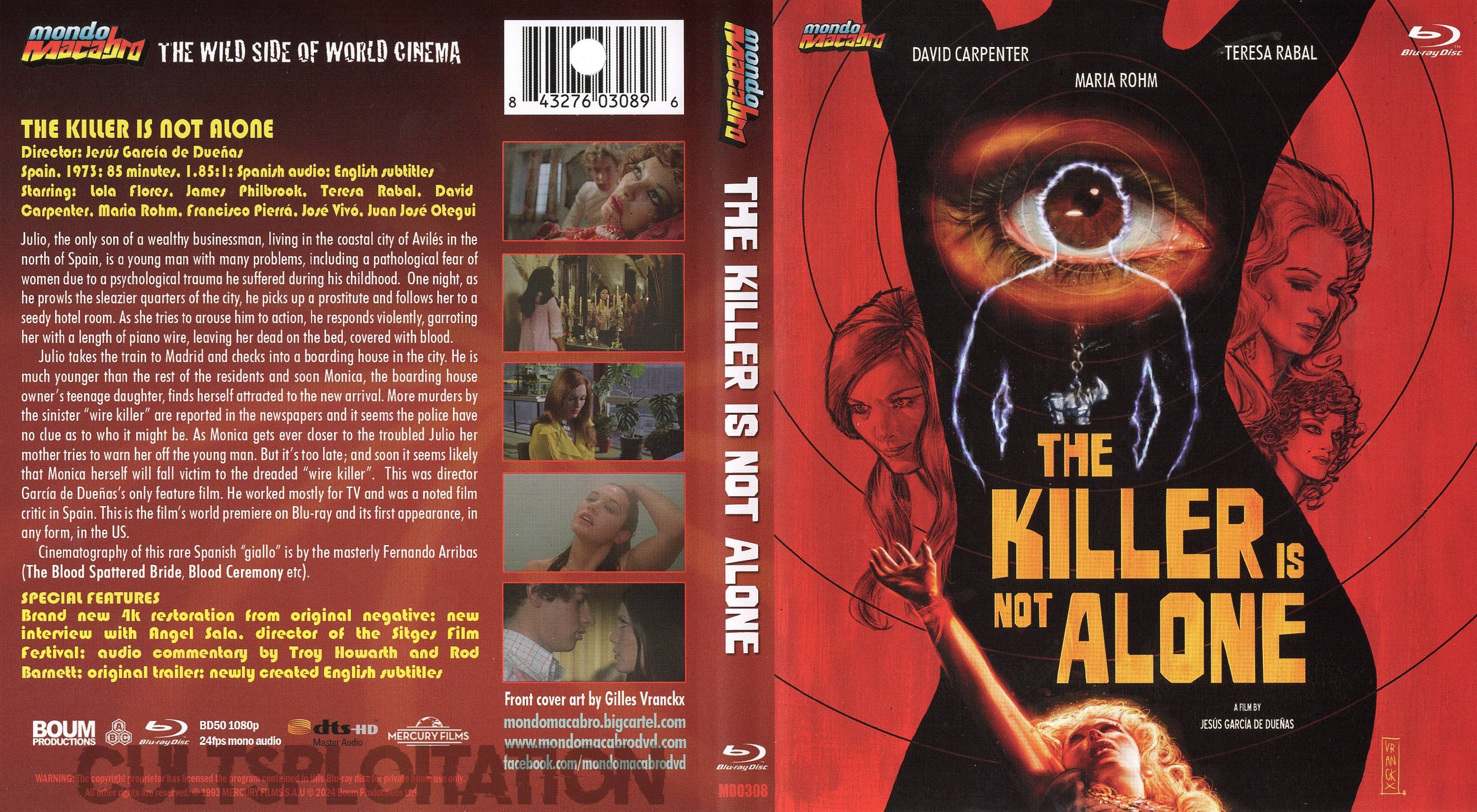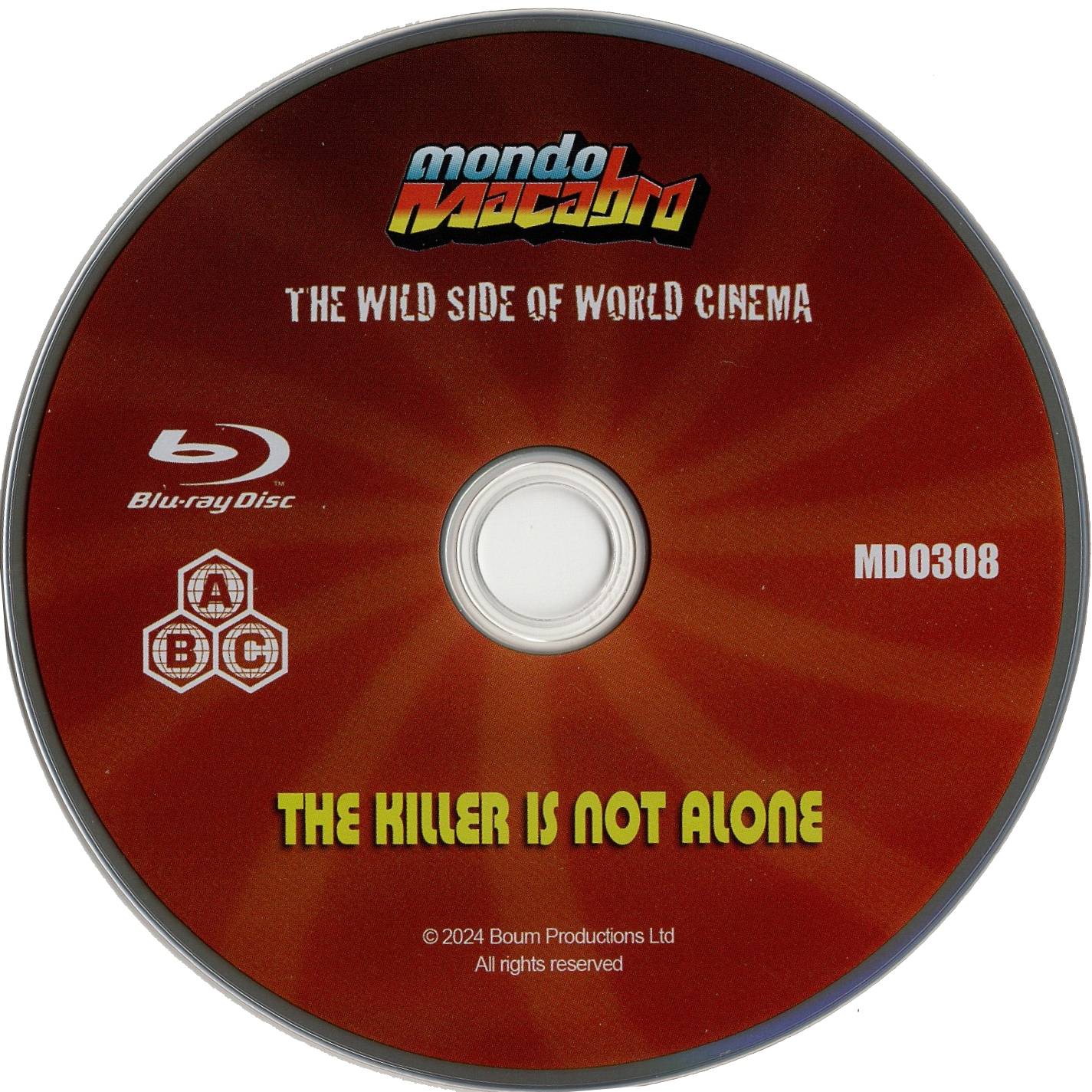
It’s not often that gialli present the killer to the audience within the opening sequence, but Jesús García de Dueñas’ 1975 thriller The Killer is Not Alone does just that in its first minutes, beginning with its main character, the troubled hot dog-scarfing Julio (billed as David Carpenter, nee Domingo Codesido Ascanio) in the act of murdering a sex worker he’s just picked up on the street. Instead of asking “Who?”, the movie instead places more emphasis on the motivations of its murderer – but this obsession leaves The Killer is Not Alone lacking much mystery.
Julio is a handsome but psychologically traumatized individual, addicted to collecting rhinoceros figurines like his father but ultimately running away from his dilemmas at home. His father’s too busy to pay attention to him, and that leaves Julio spiraling out of control and unable to handle his “urges” or really understand the clinical pathology underlying his ire towards women. Instead, he runs away to Madrid to live in a boarding house, where he meets Monica (Teresa Rabal) and falls in love – although his own murderous intentions are often unaligned with his heart.
One of the biggest problems with The Killer is Not Alone is its lack of suspense due to its unengaging mystery. The script from García de Dueñas and Jesús Torbado feels immediately stymied by its killer reveal, but that would be forgivable with enough twists and red herrings in the plotting. Unfortunately, that’s not the case: while the film features some beautiful Spanish backdrops and an obviously symbolic use of Madrid’s Holy Week throughout, there’s just not very much meat within the plot to keep things interesting. Julio as a character is kept relatively underdeveloped, most likely on purpose to disguise any potential motivations until the film’s conclusion; but this makes him a real dud for the audience to follow. Throughout, García de Dueñas does treat us to a couple of interesting montages that hint at the promise of something more exciting – like a mindscape Julio has where the murdered women live with him like mannequins – but these often don’t make a recurrence.
There’s also the fact that this film has relatively few murders. Characters surrounding Julio mention a “sex maniac” at work, referencing other murders Julio has committed, but only two are actually shown in any detail. The gruesome use of garroting wire is a shocking sight especially considering the brutality displayed by the otherwise milquetoast protagonist, but these moments are spaced too far apart to really have much lasting impact. The cinematography and lighting by Fernando Arribas can, however, be visually arresting in these moments.
All of this leads to a rather unimpressive and foregone conclusion without any real answers. The film offers a cursory explanation of Julio’s traumatic childhood, but even that is draped in such vagueness that it does little to explain the overall vehemence Julio has for women he feels are using him. The ending is predictable and falls flat without expanding on the narrative, and it all feels a bit pointless sitting through such a meandering plot only to end in the same place we started. This is the main downfall of The Killer is Not Alone: while there are recurring themes of sexual repression due to religion and an overarching element of psychological trauma, it feels like García de Dueñas’ film has relatively little to say that wasn’t done better by many similarly-suited gialli situated around “sex maniacs.”
Blu-ray
Mondo Macabro has released The Killer is Not Alone as a standard edition Blu-ray with a new 4K restoration from the original negative. The results are quite good, featuring a medium-bodied grain scale that often brings out some good details in the Spanish architecture and 1970s clothing fabrics. Close-ups reveal good facial textures and consistent skin tones. The film features some intentionally dark lighting and these sequences are managed well without noticeable crush. There’s some occasional damage, more notable during some usage of stock footage. Also of note is the degradation in quality during a number of optical effects, particularly during credits sequences or camera transitions. Lighting also seems intentionally blown-out here. Overall, this is a solid representation of The Killer is Not Alone that seems quite consistent with this vintage of European cinema.
Audio is a DTS-HD Master Audio 2.0 mono Spanish track that features English subtitles. This sounds good for the most part; occasional this suffers from some muffling during dialogue but otherwise the soundtrack stands out crisp and clear, with a featured song by Ann Collin called “No le roces con tu sonrisa” that appears both in the opening and end credits.
For extras, Mondo Macabro has included a new audio commentary with Troy Howarth and Rodney Barnett and a new interview with Angel Sala on the merits of The Killer is Not Alone. As it often goes with films like this, the audio commentary with Howarth and Barnett tends to be more interesting accompanying the film than the movie itself, and it’s an excellent way to experience The Killer is Not Alone; the two provide great context, as well as some pointed exploration of themes that run throughout the movie. Sala’s interview hones in on the Francoist context of the film, describing some of the more mundane details as they figure into the regime’s ever-present dictatorship. The 23-minute interview offers up a novel way of watching The Killer is Not Alone, as well as diving into some other Spanish “psycho-killer” films of the same period. Finally a trailer is also included on the disc.
Extra Features
- NEW 4K restoration from film negative
- NEW Interview with Angel Sala, director of the Sitges Film Festival (1080p; 23:20)
- NEW Audio commentary by Troy Howarth and Rodney Barnett
- Original trailer (1080p; 3:58)
Verdict
While The Killer is Not Alone doesn’t strike this viewer’s fancy of an entertaining Spanish-flavored giallo, the extra features on Mondo Macabro’s nice Blu-ray release hint at additional context that can add some appreciation to García de Dueñas’ work. A great transfer brings this relatively obscure film to home video for audiences to collude with the killer.

